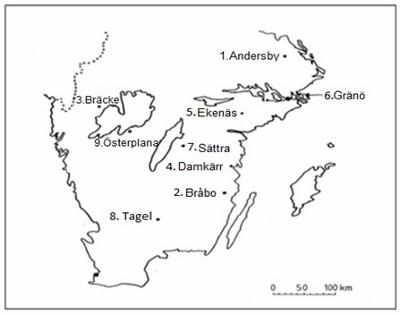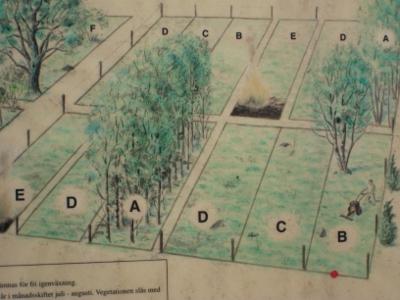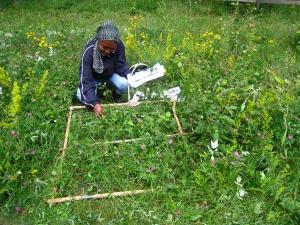
Study sites and experimental design
The study sites were long-term field experimental sites situated at nine different locations in southern Sweden. Two of these locations, Ekenäs and Tagel had two sites each making a total of eleven sites studied. The field experiments were established about 40 years ago with an aim to compare seven different management methods of semi-natural grassland vegetation: annual mowing, mowing every third year, annual spring burning, continued grazing, mechanical removal of woody plants, herbicide treatment of woody plants and untreated control. At all the sites, the management techniques were applied to 5m x 20m treatment plots set within a randomized block design with two replicates. All the plots were fenced at all the sites, with the exception of those grazed.
In the present study, only three, out of the seven management methods were evaluated, namely annual mowing, annual spring burning and grazing. Burning was done after snowmelt in March or April and the plots mowed once a year were mown in late July or early August.


Vegetation sampling and classification of plant species
Data from plant surveys carried out at the eleven experimental sites during the years 1973,1980 and 1986 was collated. Data from a survey conducted in 2000 at one of the sites at Sättra was also used. l also sampled the vegetation at Sättra in 2011. For all the years considered in this study, data collected from the burned, mowed and grazed plots were used. Species recorded from the surveys were categorized under different indicator systems of classification of grassland plants as indicators of (i) good management, (ii) excess nitrogen and (iii) lack of management. These indicator classes were used to assess and compare the management methods of burning, mowing and grazing.
Responsible for this page:
Director of undergraduate studies Biology
Last updated:
05/20/12
